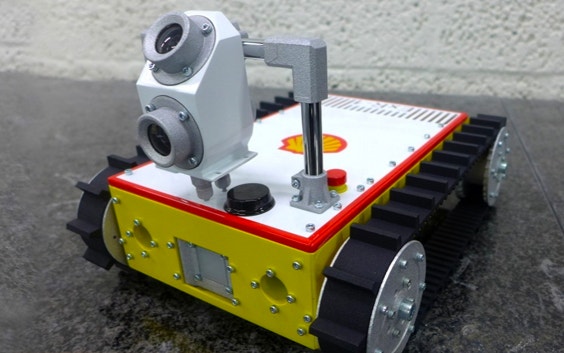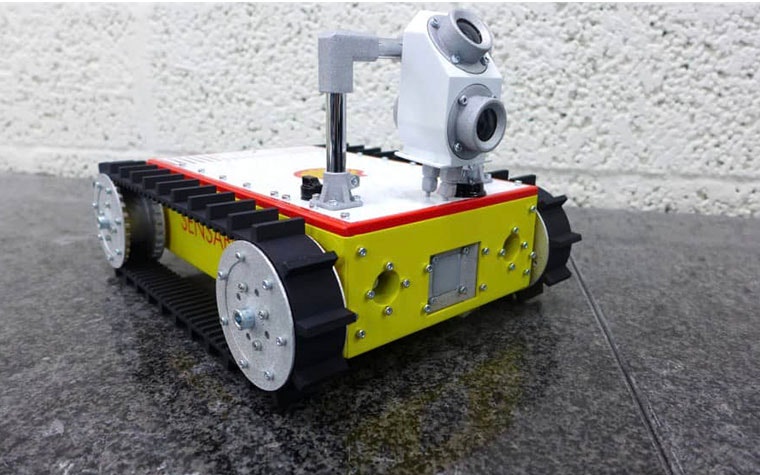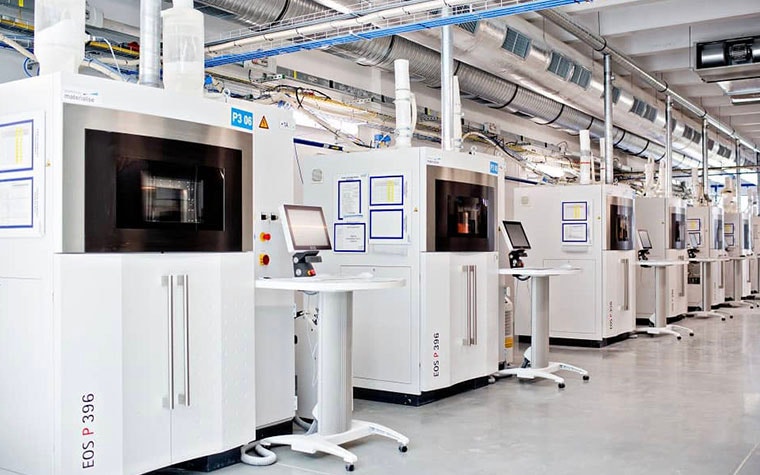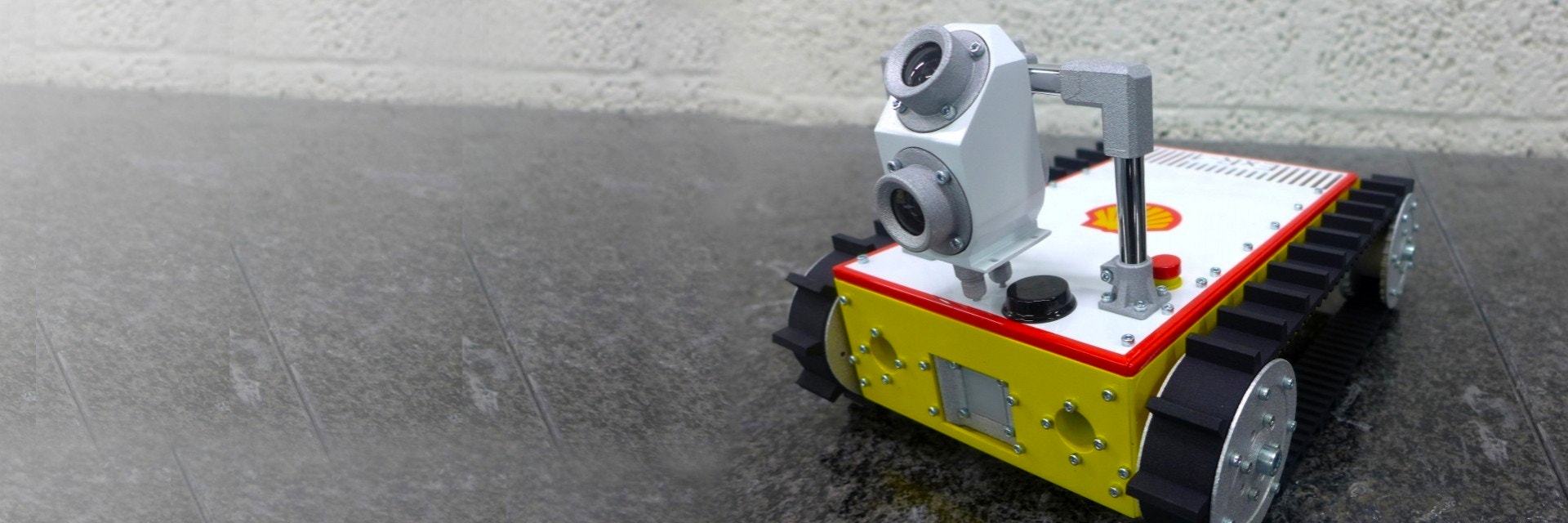CASE STUDY
Shell Brings Robotic Inspection to the Global Energy Industry, Courtesy of 3D Printing

One of the world’s largest oil and gas companies, Shell does everything it can to keep its workforce safe in hazardous environments. Employing robots to conduct equipment inspections is a longstanding focus – one with potentially huge safety and efficiency benefits.
The ExR-1 is the latest creation from the company’s robotics programme. Certified for work in explosive environments, its sensors relay inspection data to distant human operators. The ExR-1 shows great promise for wider adoption and Shell promotes its benefits to other business units as well as the wider energy industry.
To avoid transporting its large and valuable robots to promotional events, Shell asked Materialise to create smaller models to serve as demonstrators. Through a bespoke combination of 3D printing technologies, materials and finishing techniques, Materialise produced two precise replicas that look exactly like the original machines.


Reproducing robots — precisely
For Shell, safety is always the top priority and switching to robots for inherently dangerous tasks lowers the risk to vulnerable humans. Operators can remotely control inspection robots, using cameras and microphones to read gauges, see breakages and listen for abnormal sounds.
Developed by Shell and ExRobotics, the latest ExR-1 can work in potentially explosive IECEx Zone 1 environments. Far more affordable than its predecessors, it has the potential to be deployed in volume.
“The robot will be used in Shell’s remote facilities,” says Patrick de Winter, IT Innovation Advisor at Shell. “It will allow operators to do normal walk-arounds to verify everything is OK, without actually driving to the remote locations. We can avoid having operators in the line of fire and reduce travel.”
Shell is encouraging others to adopt robotics. But promoting the ExR-1 globally meant the robot had to travel the world too.
“In order to demonstrate our robots, we often needed to ship the real one over,” says de Winter. “For showcases, a smaller, 3D-printed scale model is good enough.”
Shell has its own in-house 3D printing (3DP) capability. But with six 3DP technologies and over 30 materials available at its dedicated factory, Materialise was the expert partner tasked with building the ultra-realistic, third-scale robot replicas.
“We use Materialise for specific requests we can’t fulfil internally due to size, material or printing technology, and as demand overflows,” notes de Winter.


Experience and expertise
Making an original CAD file 3D-printable can be challenging, with features like holes, thin walls or tiny details sometimes impossible to reproduce. Materialise’s Engineering team gave Shell’s design file their expert attention, utilising Magics software to split some parts up to be printed separately while combining other components into single sections.
Choosing the most appropriate 3DP process and material for each one, the team made some parts more substantial and added unseen features to permit easy assembly.
Stereolithography (SLA) printing created the robot’s body, its high gloss buttons and its camera lenses. A well-proven technology with high accuracy and surface quality, an SLA printer’s laser selectively hardens UV-sensitive liquid resins like the transparent TuskXC2700T used here.
The Engineering team chose selective laser sintering (SLS) for the robot’s grey parts. An SLS printer’s laser beam produces components by heating and binding together particles in a powder bed. PA-AF, a blend of aluminum and polyamide powder, gave the parts an authentically metallic appearance.
For the ExR-1’s caterpillar tracks, Materialise stayed with SLS but swapped PA-AF for Polyamide. This powder forms finely detailed, slightly porous parts which can be dyed different colours.


3D printing showcases robotics
With the components printed, Materialise’s finishing team took over. They made sure the visible surfaces mimicked the original robot, painting the body for a high gloss sheet metal look and dyeing the caterpillar tracks black. Though only a third of the size, the assembled models are visually exactly identical to the original.
“We had a very good conversation with Materialise’s engineers in order to get the right product delivered. The scale model has been a great conversation starter in order to convince our stakeholders that they should invest in these differentiating technologies.”
— Patrick de Winter, IT Innovation Advisor
Robots like the ExR-1 will soon carry out simple tasks with no human intervention. In the longer term, they will operate completely autonomously, with manipulators to perform hazardous jobs.
The ExR-1 shows how technical innovation can significantly boost safety and increase efficiency. As robotics adoption increases, spare a thought for the other pioneering technology that’s helping it on its way – 3D printing.
以下で共有する:
上記CASE STUDYについて
Machinery & Equipment
Laser sintering
Stereolithography
To fulfill specific design requests that Shell's in-house 3D printing couldn't provide
More affordable than earlier versions with potential to deploy in volume
